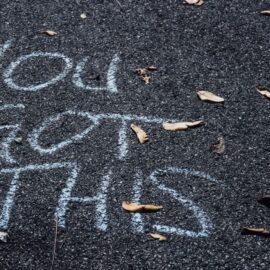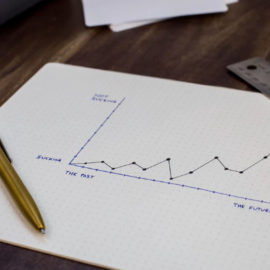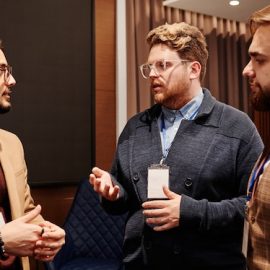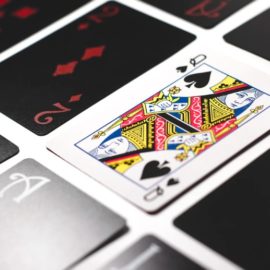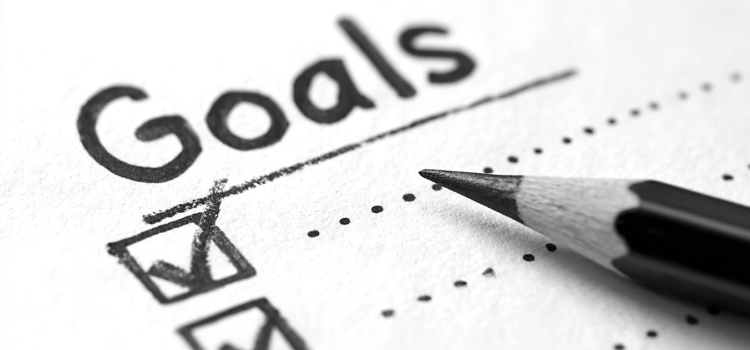
How is the traditional goal-setting approach fundamentally flawed? How can you ensure that you’re pursuing goals that align with your authentic self?
In Tiny Experiments, neuroscientist and entrepreneur Anne-Laure Le Cunff challenges our ingrained beliefs about achievement and offers an alternative. She says to treat your life as a laboratory for discovery rather than a linear path to predetermined destinations.
Keep reading for an overview of the book so you can learn how to pursue true growth and fulfillment.
Tiny Experiments Book Overview
In Tiny Experiments (2025), neuroscientist Anne-Laure Le Cunff contends that traditional goal-setting is fundamentally flawed: When we fixate on specific outcomes, without allowing ourselves room for exploration and adaptation, we often end up pursuing goals that don’t bring the satisfaction we expected or following paths that don’t align with our authentic selves. Le Cunff recommends taking an alternative, experimental approach. If instead, we allow our curiosity to drive our exploration and our growth to emerge through cycles of action and reflection, we can find a path to pursuing our ambitions that aligns better with how humans naturally learn and thrive.
Le Cunff worked in marketing at Google before pursuing a PhD in Neuroscience. As the founder of Ness Labs and a neuroscientist at Kings College London, she studies curiosity and works in the ADHD Research Lab. Drawing from her multidisciplinary background in neuroscience, entrepreneurship, and productivity research, Le Cunff offers a framework that reduces anxiety, enhances creativity, and leads to more meaningful discoveries about ourselves and our potential paths forward.
Our guide explains Le Cunff’s experimental approach in three sections. First, we examine why conventional goal-setting often fails us, highlighting the emotional and practical costs of linear thinking. Next, we explore the experimental mindset Le Cunff proposes as an alternative, emphasizing curiosity, openness, and iterative growth. Finally, we provide a comprehensive look at how to implement tiny experiments in practice, covering both personal experimentation techniques and strategies for collaborative learning. Along the way, we’ll explore how Le Cunff’s approach is supported by research in neuroscience and draw connections between her framework and scientific methodology, artistic practice, and philosophical traditions.
Why Traditional Goal-Setting Fails Us
From childhood, we learn that success follows from setting clear goals and relentlessly pursuing them. We create five-year plans, vision boards, and bucket lists, believing that plotting a direct course to our desired destination is the surest way to find a path to fulfillment. This approach seems logical: Decide what you want, make a plan to get it, and execute that plan with discipline and determination. But what if this approach to achievement is actually holding us back? Le Cunff challenges our most ingrained beliefs about goal-setting and explains that there are both practical and emotional costs to pursuing our goals the traditional way.
The Practical Costs of a Conventional Approach to Goals
Traditional goal-setting operates on what Cunff describes as a linear model: First you identify a destination, next you plot the most direct path there, and then you follow that path using willpower and discipline. We’re often taught to set “SMART” goals—goals that are Specific, Measurable, Achievable, Relevant, Time-bound—and, once we’ve set those goals, to maintain unwavering focus on achieving them. But Le Cunff argues that this linear approach leads us to commit prematurely to paths that might not align with our evolving understanding of ourselves and the world. It’s like setting out on a journey with a fixed destination and refusing to consider potentially more rewarding detours that appear along the way.
Le Cunff explains that the linear approach to goal-setting has several practical flaws that often go unrecognized. First, the process assumes we already know exactly what we want, when in reality our desires are frequently shaped by influences outside of us as well as by our fundamental character and aspirations. Second, it positions our failure to reach a predetermined goal as something we need to avoid at all costs, creating unnecessary pressure and anxiety. Third, it encourages a rigid mindset toward achievement that leaves us struggling to adapt when our circumstances inevitably change.
The Emotional Costs of Pursuing Linear Goals
Le Cunff explains that the mismatch between how we set our goals and how we actually learn and change throughout our lives makes goal-setting not only ineffective on a practical level, but also harmful to our emotional well-being.
First, a linear approach to goal-setting breeds anxiety. When you stake your sense of success on reaching specific outcomes, you live in a continuous state of tension between where you are and where you think you should be. Le Cunff explains that this anxiety stems from the erroneous belief that happiness lies at the destination rather than in the journey itself—a common mistake in our thinking that scientists call “the arrival fallacy.” You convince yourself that once you reach a certain milestone (getting the job, buying the house, publishing the book), you’ll finally be content. But when you achieve your goal, the happiness you expected rarely materializes as you envisioned it or lasts as long as you assumed it would.
Second, approaching goals as destinations to reach rather than as journeys to discover makes us susceptible to burnout through toxic productivity. Le Cunff explains that our traditional goal-setting mindset implicitly frames productivity as a moral virtue. It also measures your success in working toward a goal by the work or output you produce, rather than by the meaning or fulfillment you find along the way. She explains that this puts you on a treadmill where you’re always striving but never arriving. For many people, this emphasis on constant productivity is a quick path to burnout, or exhaustion and diminished well-being.
Third, Le Cunff contends that traditional goal-setting promotes social isolation and unhealthy competition. When you focus exclusively on your achievements, you view other people as either competitors pursuing goals that are similar to yours, or tools you can use to help you reach your goals. In both cases, you miss the opportunity to see others as potential collaborators, whom you can learn from and have alongside you as you pursue your own path of discovery and growth.
Finally, Le Cunff points out that sticking to predetermined goals can prevent you from uncovering your authentic desires and interests. When you prematurely commit to specific outcomes before you’ve had a chance to explore, you limit your chances of finding potentially more fulfilling paths. This rigid approach prioritizes a comforting sense of predictability over the potential of open-ended discovery. As a result, you may end up achieving goals that look impressive but don’t bring you fulfillment, simply because you never gave yourself permission to explore alternatives that might have resonated more deeply with your true self.
What Le Cunff Recommends: Run Tiny Experiments Instead
Le Cunff says that instead of overcommitting to specific goals, you should try an alternative she calls “tiny experiments”: small-scale, purposeful commitments designed to help you explore possibilities by taking on minimal risk but still gaining meaningful insight. With these experiments, you can test different paths and gather real data about what engages and fulfills you, rather than relying on assumptions or external expectations. At the heart of this approach is a shift from viewing life as a linear journey toward fixed destinations to seeing it as a laboratory for learning and discovery. Each tiny experiment becomes part of an iterative process where action leads to insight, which informs your next steps.
The Structure of Effective Tiny Experiments
To implement tiny experiments effectively, Le Cunff introduces the concept of a “pact”: a formal agreement you make with yourself that gives structure to your experiment. These pacts ensure your experiments are:
- Purposeful: Each pact addresses a specific question you’re curious about or tests a hypothesis that’s relevant to your interests. This purpose gives direction to your experiment.
- Actionable: The pact involves concrete behaviors and practices rather than trying to follow through on vague intentions, making it clear exactly what you’re committing to do.
- Continuous: A pact commits you to repeated action over a defined timeframe (days or weeks, not months or years), allowing patterns to emerge that wouldn’t be visible in a one-time activity.
- Trackable: The pact includes a clear way to determine whether you’ve completed the experiment as intended, regardless of the outcome.
For example, instead of setting a vague goal like, “I want to become a better writer,” your pact might be: “I will write for 20 minutes every morning for the next 30 days, tracking each session in my journal.”
What Mindset Do You Need to Run Tiny Experiments?
Just as scientists have to approach experiments in the lab with an openness to learning new information and a willingness to check their existing assumptions, turning your goals into tiny experiments also requires you to adopt the right mindset. Le Cunff explains that to make tiny experiments effective, you need to adopt an experimental mindset that changes how you approach your aspirations. Beyond running experiments, this mindset transforms your relationship with goals, uncertainty, and personal growth. The experimental mindset Le Cunff recommends cultivating involves:
1) Treating life as a laboratory for learning. In the same way that scientists run experiments to discover truths about the world, you can run experiments to discover truths about yourself and what paths might be most fulfilling for you. This perspective shifts you from being a passive follower of predetermined paths to an active explorer of possibilities.
2) Approaching uncertainty with curiosity rather than anxiety. Le Cunff explains that instead of fearing the unknown or being anxious about unpredictability, an experimental mindset empowers you to reframe uncertainty as fertile ground for discovery. Questions like “What might happen if I try this?” replace worries like “What if I make the wrong choice?”
3) Reframing “failure” as data. When an experiment doesn’t produce the results you expected (or wanted), an experimental mindset enables you to see the unexpected result not as a personal failing but as valuable information that guides your next decisions. Le Cunff notes that this shift transforms setbacks from sources of shame into sources of insight.
4) Holding goals lightly. Rather than fixating on specific outcomes, you can stay flexible about your destination based on what you discover. Le Cunff differentiates between having aspirations (which provide energy and direction as you learn about yourself) and being fixated on specific goals (which can create tunnel vision). Aspirations serve as fuel for exploration rather than fixed endpoints. For example, instead of setting a rigid goal like “become a published novelist by age 35,” you might hold the aspiration to “explore creative writing as a form of expression.” This flexibility allows you to discover that you might prefer screenwriting or poetry, or to take unexpected opportunities like collaborative projects that wouldn’t fit your original narrow goal.
5) Distinguishing between chronos and kairos time. Le Cunff explains that traditional goal-setting operates on chronos time—linear, clock-based time that marches forward at a constant rate. In contrast, an experimental mindset attunes you to kairos time—the right or opportune moment for action. This shift helps you recognize that meaningful growth, insight, and opportunity often can’t be scheduled or forced. Instead of rigidly adhering to arbitrary deadlines, you learn to sense when conditions are right for certain actions or decisions, creating a more flexible relationship with time that honors both structure and spontaneity.
The Benefits of an Experimental Mindset
Le Cunff explains that the shift to an experimental mindset produces several advantages that help you address the problems inherent in traditional goal-setting:
1) Reduced anxiety and pressure. By removing the expectation of getting everything right on the first try, tiny experiments lower the stakes of exploration. You no longer need to feel that your worth or future depends on perfect execution of a single plan.
2) Increased resilience in the face of setbacks. An experimental approach enables you to view obstacles as temporary data points rather than permanent defeats. This makes it easier to bounce back and continue forward movement, even in challenging circumstances.
3) Enhanced creativity and innovation. By encouraging exploration of multiple pathways rather than focusing narrowly on a single approach, tiny experiments often lead to solutions and insights that a more linear approach would miss.
4) Improved self-knowledge through direct experience. Instead of assuming you know what will make you happy based on external influences or abstract reasoning, tiny experiments help you discover your authentic preferences, strengths, and sources of fulfillment through concrete experience.
5) Sustainable growth rather than burnout. Instead of exhausting yourself with intense bursts of effort followed by crashes, tiny experiments create a gentler rhythm of continuous growth. The cycle of action, reflection, and adjustment feels more natural to your brain and body, helping you maintain energy and enthusiasm over the long term. It’s like the difference between sprinting until you collapse versus finding a comfortable jogging pace you can maintain for miles.
How Growth Loops Fuel Tiny Experiments
Central to Le Cunff’s approach is the idea of replacing linear paths with “growth loops”—cycles of action, observation, reflection, and adjustment that build upon each other over time. This approach matches how both our brains and significant human achievements actually work. From scientific breakthroughs to artistic masterpieces to personal transformations, history shows that meaningful progress rarely follows a straight line. Instead, it emerges through iterations of trial, error, reflection, and adaptation—an expanding spiral where each iteration takes you deeper and farther. This iterative process involves:
- Taking action based on your current understanding and interests
- Observing what happens and how you respond to the experience
- Reflecting on these observations to extract meaningful insights
- Adjusting your approach based on what you’ve learned
Le Cunff also introduces the concept of “intentional imperfection”—the strategic decision to prioritize excellence in your most important areas while accepting good-enough results elsewhere. This balanced approach prevents perfectionism from stalling your progress and allows you to direct your energy where it matters most at any given moment.
How to Implement Tiny Experiments in Your Life
Le Cunff provides a framework for implementing tiny experiments in your life. This process involves three key phases: designing effective experiments, implementing them with awareness, and extracting meaningful learning through reflection and collaboration.
Design Effective Experiments
The first step is creating experiments that are both meaningful and manageable. Le Cunff suggests several strategies for developing effective tiny experiments. You can identify fertile ground for experiments by paying attention to:
- Areas where you say “I’m just not good at this” (which might indicate self-limiting beliefs about your capabilities or preferences you’ve adopted—and need to overcome)
- Activities you gravitate toward when procrastinating (which Le Cunff explains can signal areas of authentic interest)
- Skills or experiences you’re curious about but have avoided trying
- Patterns of resistance that might indicate misalignment with your authentic interests
Create clear, specific pacts that define exactly what you’ll do, how often, for how long, and how you’ll track your follow-through. Le Cunff says they should be specific enough that you’ll know without ambiguity whether you’ve completed the experiment.
For example, someone who’s always said, “I’m just not a morning person” might design an experiment to test this belief, creating a pact to wake up at 6 a.m. every weekday for two weeks, followed by 30 minutes of a specific morning routine. This time-bounded commitment allows them to gather data about their preferences without the pressure of making a permanent change. At the end of the two weeks, they can reflect on whether early mornings actually don’t work for them or if they just needed a different approach to make mornings more energizing.
Keep experiments small but meaningful. The “tiny” in tiny experiments is crucial because it reduces the stakes of any one thing you’d like to try, making it easier to begin and learn from the experience without overwhelming pressure. But Le Cunff points out that experiments should also be substantial enough to yield insights about your preferences and interests.
Implement Your Experiments With the Triple Check System
Once you’ve designed an experiment, Le Cunff recommends using a diagnostic framework she calls the “Triple Check” to help you implement the experiment effectively and troubleshoot when you encounter resistance:
- Rational: Is this task appropriate for my goals and values? Does the strategy make sense? If you’re questioning the value or relevance of the experiment, you might need to revisit your purpose or adjust the approach to better align with your current priorities.
- Emotional: Does this task excite me emotionally, or am I feeling fear, boredom, or aversion? Emotional resistance often indicates deeper patterns worth exploring. Techniques like journaling or conscious movement can help identify and address these feelings.
- Practical: Do I have the practical abilities, tools, or resources needed to complete this effectively? Sometimes resistance stems from legitimate skills gaps that you can address through learning, support, or simplifying the initial experiment.
This framework helps you determine whether you need to adjust your approach, your emotional engagement, or your practical preparations for the experiment. Le Cunff explains that this prevents you from abandoning experiments prematurely or pushing through even when you need to recalibrate.
She also emphasizes that procrastination itself is not a character flaw but rather a valuable signal that something is misaligned in your approach. When you find yourself consistently putting off a task, instead of berating yourself for lack of discipline, get curious about what this resistance might be telling you. Procrastination often indicates a mismatch between your rational goals, emotional needs, or practical abilities. Using the Triple Check system lets you decode what procrastination is telling you, so you can make adjustments that better align your experiments with your authentic self.
Le Cunff also acknowledges that sometimes your experimental struggles stem not from personal misalignment but from the systems and environments you operate within. When you’ve honestly applied the Triple Check and still encounter persistent obstacles, consider whether external factors—organizational cultures, societal pressures, or unsupportive relationships—might be the actual barrier. In those cases, the most valuable experiment might involve advocating for systemic changes or, if necessary, making the difficult decision to leave toxic environments. This prevents you from internalizing problems that actually require external solutions, a distinction that protects your well-being as you navigate your experimental journey.
Learn Through Reflection and Collaboration
What transforms simple activities into sources of growth is the combination of structured reflection and collaborative learning that Le Cunff sees as vital parts of a tiny experiment.
Reflection
She explains that metacognition—our ability to think about our thinking, and learn about our learning—becomes a crucial tool you can use to your advantage to reflect on what happened during an experiment and figure out the best path forward. She recommends using the “Plus Minus Next” framework after completing experiments:
- Plus: Note what went well, what you enjoyed, and what worked.
- Minus: Acknowledge what didn’t work, what felt challenging, and what you didn’t enjoy.
- Next: Decide what adjustments you’ll make in your next experiment based on these insights.
This practice creates a bridge between action and learning, ensuring that each experiment contributes to your evolving understanding of yourself and your path. Le Cunff emphasizes that without this reflective component, you might take action without extracting the valuable insights that could guide your next steps.
Collaboration
Create reciprocal learning relationships where you engage with others’ experimental journeys as well as sharing your own. These mutual exchanges create what Le Cunff calls “social flow”—a state where collaborative experimentation yields insights and progress that exceed what any individual could achieve in isolation. Le Cunff also recommends “learning in public” by sharing your experimental journey with others. She explains that learning alongside other people who are also on a journey of discovery and growth:
- Accelerates your learning through the feedback you receive from others and the diverse perspectives you observe
- Creates accountability that increases your motivation to follow through on the things you say you’ll do
- Increases serendipitous connections and creates new opportunities for you and other people in your community
- Helps you to build a supportive community around shared curiosity and a common dedication to learning and growth
Learning in public doesn’t necessarily mean broadcasting what you’re doing to thousands of people—Le Cunff explains that it could involve keeping a small group of trusted friends in the loop, updating your professional community on what you’re thinking about and working on. She explains that the key is creating some form of external feedback loop that complements your internal reflection.
Start Experimenting
To start implementing tiny experiments, Le Cunff suggests these steps:
- Choose one area of curiosity or resistance to focus your first experiment. Start with something meaningful but not overwhelming.
- Design a specific, time-bounded pact that you’ll commit to for the next 7-30 days. Make it small enough that you can confidently complete it.
- Decide on your reflection method—whether the Plus Minus Next framework or another approach that works for you—and schedule specific times for this reflection.
- Select a level of social sharing that feels challenging but not terrifying, and choose the platform or format you’ll use.
- Begin your experiment with the mindset of a scientist gathering data, not a performer being judged.
Exercise: Design Your First Tiny Experiment
Le Cunff contends that pursuing tiny experiments rather than rigid goals can transform how you approach growth and fulfillment. This exercise will help you design your first tiny experiment based on an area of curiosity or resistance in your life.
- First, identify an area where you’re curious to explore or where you’ve told yourself “I’m not good at this” or “This isn’t for me.” What area will your first tiny experiment address?
- Now, create a specific “pact” with yourself following Le Cunff’s four criteria (purposeful, actionable, continuous, trackable). Include what you’ll do, how often, for how long, and how you’ll track it. For example: “I will write poetry for 15 minutes every morning for the next 10 days, and check it off in my journal.”
- What specific insights or discoveries do you hope to gain from this experiment? Remember, the goal isn’t perfection but learning.
- Who could you share this experiment with to create accountability and gain additional perspectives? This could be one person, a small group, or a larger community.

